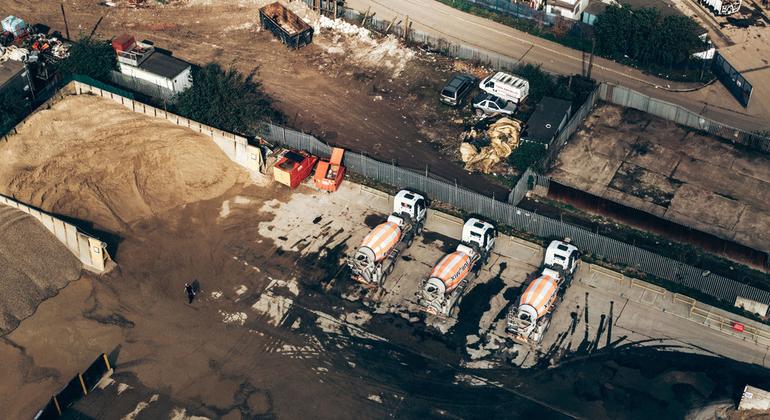Sand and Sustainability: 10 Strategic Recommendations to Avert a Crisis, makes clear that the world cannot continue to keep taking 50 billion tonnes of sand out of the ground and sea every year without serious consequences.
“Our sand resources are not infinite, and we need to use them wisely,” said Pascal Peduzzi, Director of GRID-Geneva at UNEP and report programme coordinator.
“To achieve sustainable development, we need to drastically change the way we produce, build and consume products, infrastructures and service.”
Precious resource
After water, sand is the most used resource globally.
The world uses 50 billion tonnes of sand and gravel each year, enough to build a wall 27 metres wide and 27 metres high around planet Earth.
Given our dependency on it, sand must be recognized as a strategic resource and its extraction and use needs to be rethought, the new report finds.
“If we can get a grip on how to manage the most extracted solid material in the world, we can avert a crisis and move toward a circular economy,” said Mr. Peduzzi.
Extract mindfully
The report provides guidance on switching to improved practices for extracting and managing the resource.
According to its authors, sand must be recognized as more than a construction material, but as a strategic resource with multiple roles in the environment.
Extracting sand from rivers and coastal or marine ecosystems can lead to erosion, salination of aquifers, loss of protection against storm surges and impacts on biodiversity – posing a threat to livelihoods, including through water supply, food production or fisheries, as well as the tourism industry.
The authors stress that governments, industries and consumers should price sand in a way that recognizes its true social and environmental value.
Shifting sands?
Keeping sand on coasts may be the most cost-effective strategy for climate adaptation because it protects against storm surges and sea level rise. They argue that such services should be factored into its value.
Moreover, the report proposes that an international standard be developed on how sand is extracted from the marine environment, underscoring that it could bring about dramatic improvements as most marine dredging is done through public tenders, open to international companies.
It also recommends banning sand extraction from beaches as it is crucial for coastal resilience, the environment and the economy.
“Given our dependency on sand, it should be recogniszd as a strategic resource and its extraction and use needs to be reassessed”, Mr. Peduzzi attested.
Global Goals impact
As an essential element in producing concrete for vital infrastructure, sand is critical to economic development.
It also provides habitats for flora and fauna while supporting biodiversity, including marine plants that act as carbon sinks or filter water.
Despite its importance in achieving the Sustainable Development Goals (SDGs) and tackling the triple planetary crisis of climate change, pollution and biodiversity loss, sand is being used faster than it can be naturally replenished, making its responsible management crucial.
Circular economy
Banning the landfilling of mineral waste and encouraging sand to be reused in public procurement contracts, are among the policy measures cited that will aid the move towards a virtuous, circular economy for sand.
The report also details that crushed rock, recycled construction, demolition material, and ‘ore-sand’ from mine tailings are viable alternatives that should be incentivized.
For sand to be more effectively governed and best practices implemented, new institutional and legal structures are needed.
Sand resources must furthermore be mapped, monitored and reported on, the report recommends, and everyone involved in decisions related to its management, allow for place-based approaches and avoid one-size-fits-all solutions, the paper stressed.



